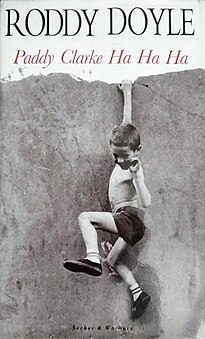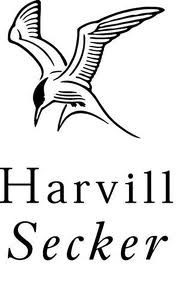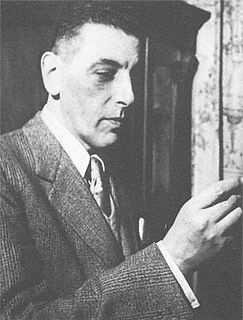John Knowles was an American novelist best known for A Separate Peace (1959).
Sir Michael de Courcy Fraser Holroyd is an English biographer.

Paddy Clarke Ha Ha Ha is a novel by Irish writer Roddy Doyle, first published in 1993 by Secker and Warburg. It won the Booker Prize that year. The story is about a 10-year-old boy living in Barrytown, North Dublin, and the events that happen within his age group, school and home in around 1968.

Aidan Higgins was an Irish writer. He wrote short stories, travel pieces, radio drama and novels. Among his published works are Langrishe, Go Down (1966), Balcony of Europe (1972) and the biographical Dog Days (1998). His writing is characterised by non-conventional foreign settings and a stream of consciousness narrative mode. Most of his early fiction is autobiographical - "like slug trails, all the fiction happened."
Gordon M. Williams was a British author. Born in Paisley, Renfrewshire, he moved to London to work as a journalist. He wrote for television and was the author of more than 20 novels, including From Scenes Like These (1969), shortlisted for the Booker Prize in 1969, Walk Don't Walk (1972) and Big Morning Blues (1974). Other novels include The Camp (1966), The Man Who Had Power Over Women (1967) and The Upper Pleasure Garden (1970).
Christopher Hovelle Wood was an English screenwriter and novelist best known for the Confessions series of novels and films which he wrote as Timothy Lea. Under his own name, he adapted two James Bond novels for the screen: The Spy Who Loved Me and Moonraker (1979).
Sir Ronald Harwood, is an African-born British author, playwright and screenwriter. He is most noted for his plays for the British stage as well as the screenplays for The Dresser and The Pianist, for which he won the 2003 Academy Award for Best Adapted Screenplay. He was nominated for the Best Adapted Screenplay Oscar for The Diving Bell and the Butterfly (2007).

Peter Neville Frederick Porter OAM was a British-based Australian poet.
Jon Kimche was a journalist and historian. A Swiss Jew, he arrived in England at the age of 12, becoming involved in the Independent Labour Party as a young man. In 1934–35, he worked with George Orwell in a Hampstead bookshop, Booklover’s Corner, and he later managed the ILP's bookshop at 35 Bride Street, near Ludgate Circus. As chair of the ILP Guild of Youth, he visited Barcelona in 1937, where he again met Orwell.
Brian Lester Glanville is an English football writer and novelist.

Harvill Secker is a British publishing company formed in 2005 from the merger of Secker & Warburg and the Harvill Press.
John David Caute is a British author, novelist, playwright, historian and journalist.

Fredric John Warburg was a British publisher best known for his association with the author George Orwell. During a career spanning a large part of the 20th century and ending in 1971 Warburg published Orwell's Animal Farm (1945) as well as Nineteen Eighty-Four (1949), and works by other leading figures such as Thomas Mann and Franz Kafka. Other notable publications included The Third Eye by Lobsang Rampa, Pierre Boulle's The Bridge over the River Kwai, Adolf Hitler's Mein Kampf and William Shirer's The Rise and Fall of the Third Reich.
Maurice Leitch is an author born in Northern Ireland. Leitch's work includes novels, short stories, dramas, screenplays and radio and television documentaries. His first novel was The Liberty Lad, published in 1965. His second novel, Poor Lazarus was awarded the Guardian Fiction Prize in 1969, and Silver's City won the Whitbread Prize in 1981.
Maxwell Jeffrey Catto was born Mark Finkell in Manchester, England and was an English playwright and novelist.
Tom Stacey FRSL is a British novelist, publisher, screenwriter, foreign correspondent and penologist.
Eric Mosbacher was an English journalist and translator from Italian, French, German and Spanish. He translated work by Ignazio Silone and Sigmund Freud.
Father Friedrich Erxleben, SJ was a Jesuit priest and member of the "Solf Circle" German Resistance group.

During the Second World War, Pope Pius XII maintained links to the German resistance to Nazism against Adolf Hitler's Nazi regime. Although remaining publicly neutral, Pius advised the British in 1940 of the readiness of certain German generals to overthrow Hitler if they could be assured of an honourable peace, offered assistance to the German resistance in the event of a coup and warned the Allies of the planned German invasion of the Low Countries in 1940. The Nazis considered that the Pope had engaged in acts equivalent to espionage.














